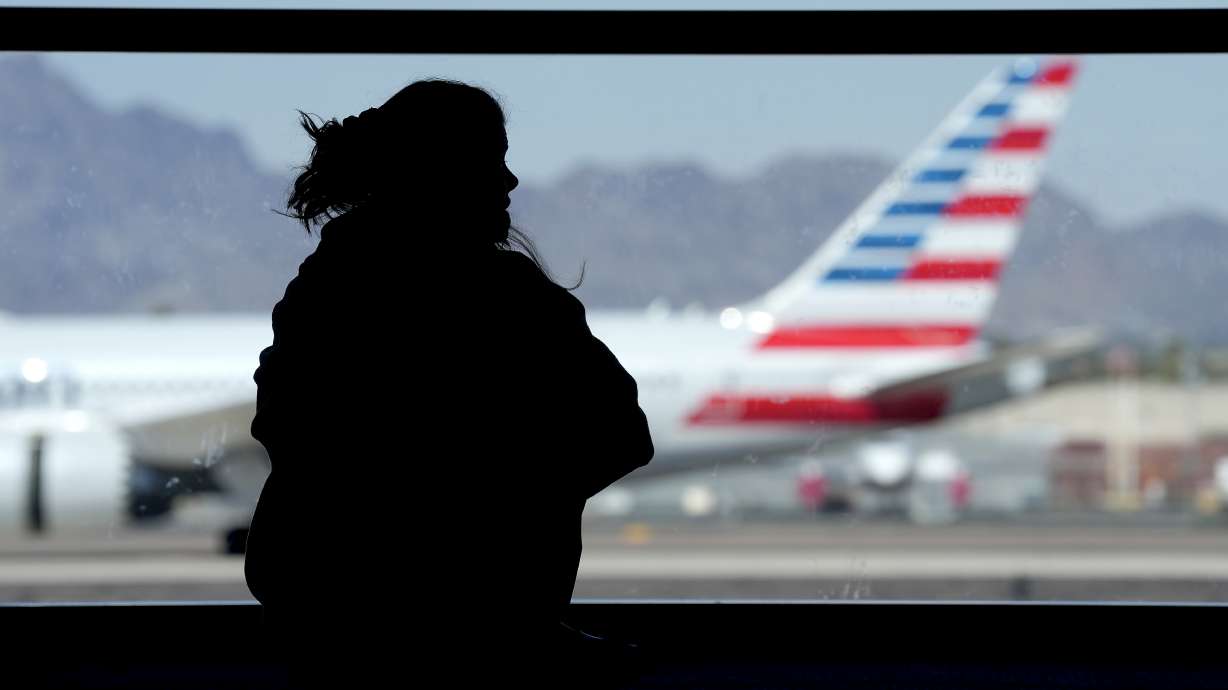WASHINGTON — American Airlines briefly grounded flights nationwide Tuesday because of a technical problem just as the Christmas travel season kicked into overdrive and winter weather threatened more potential problems for those planning to fly or drive.
Government regulators cleared American flights to get airborne about an hour after the Federal Aviation Administration ordered a national ground stop for the airline. The order, which prevented planes from taking off, was issued at the airline’s request.
The airline said in an email that the problem was caused by trouble with vendor technology that maintains its flight operating system.
Dennis Tajer, a spokesperson for the Allied Pilots Association, a union representing American Airlines pilots, said the airline told pilots at 7 a.m. Eastern that there was an outage affecting the system known as FOS. It handles different types of airline operations, including dispatch, flight planning, passenger boarding, as well as an airplane’s weight and balance data, he said.
Some components of FOS have gone down in the past, but a systemwide outage is rare, Tajer said.
Hours after the ground stop was lifted, Tajer said the union had not heard about any “chaos out there beyond just the normal heavy travel day.” He said officials were watching for any cascading effects, such as staffing problems.
Flights were delayed across American’s major hubs, with only 37% leaving on time, according to Cirium, an aviation analytics company. Out of the 3,901 domestic and international American Airlines flights scheduled for Tuesday, 19 were canceled.
Cirium noted that the vast majority of flights were departing within two hours of their scheduled departure time. A similar percentage — 36% — were arriving at their destinations as scheduled.

Meanwhile, the flight-tracking site FlightAware reported that 3,712 flights entering or leaving the U.S., or serving domestic destinations, were delayed Tuesday, with 55 flights canceled. It did not show any flights from American Airlines.
Cirium said Dallas-Fort Worth, New York’s Kennedy Airport and Charlotte, North Carolina, saw the greatest number of delays. Washington, Chicago and Miami experienced considerably fewer delays.
Amid the travel problems, significant rain and snow were expected in the Pacific Northwest at least into Christmas Day. Showers and thunderstorms were developing in the South. Freezing rain was reported in the Mid-Atlantic region near Baltimore and Washington, and snow fell in New York.
Because the holiday travel period lasts weeks, airports and airlines typically have smaller peak days than they do during the rush around Thanksgiving, but the grind of one hectic day followed by another takes a toll on flight crews. And any hiccups — a winter storm or a computer outage — can snowball into massive disruptions.
That is how Southwest Airlines stranded 2 million travelers in December 2022, and Delta Air Lines suffered a smaller but significant meltdown after a worldwide technology outage in July caused by a faulty software update from cybersecurity company CrowdStrike.
Many flights during the holidays are sold out, which makes cancellations even more disruptive than during slower periods. That is especially true for smaller budget airlines that have fewer flights and fewer options for rebooking passengers. Only the largest airlines, including American, Delta and United, have “interline agreements” that let them put stranded customers on another carrier’s flights.
This will be the first holiday season since a Transportation Department rule took effect that requires airlines to give customers an automatic cash refund for a canceled or significantly delayed flight. Most air travelers were already eligible for refunds, but they often had to request them.
Passengers still can ask to get rebooked, which is often a better option than a refund during peak travel periods. That’s because finding a last-minute flight on another airline tends to be expensive.
An American spokesperson said Tuesday was not a peak travel day for the airline — with about 2,000 fewer flights than the busiest days — so the airline had somewhat of a buffer to manage the delays.
The groundings happened as millions of travelers were expected to fly over the next 10 days. The Transportation Security Administration expects to screen 40 million passengers through Jan. 2.
Airlines expect to have their busiest days on Thursday, Friday and Sunday.

